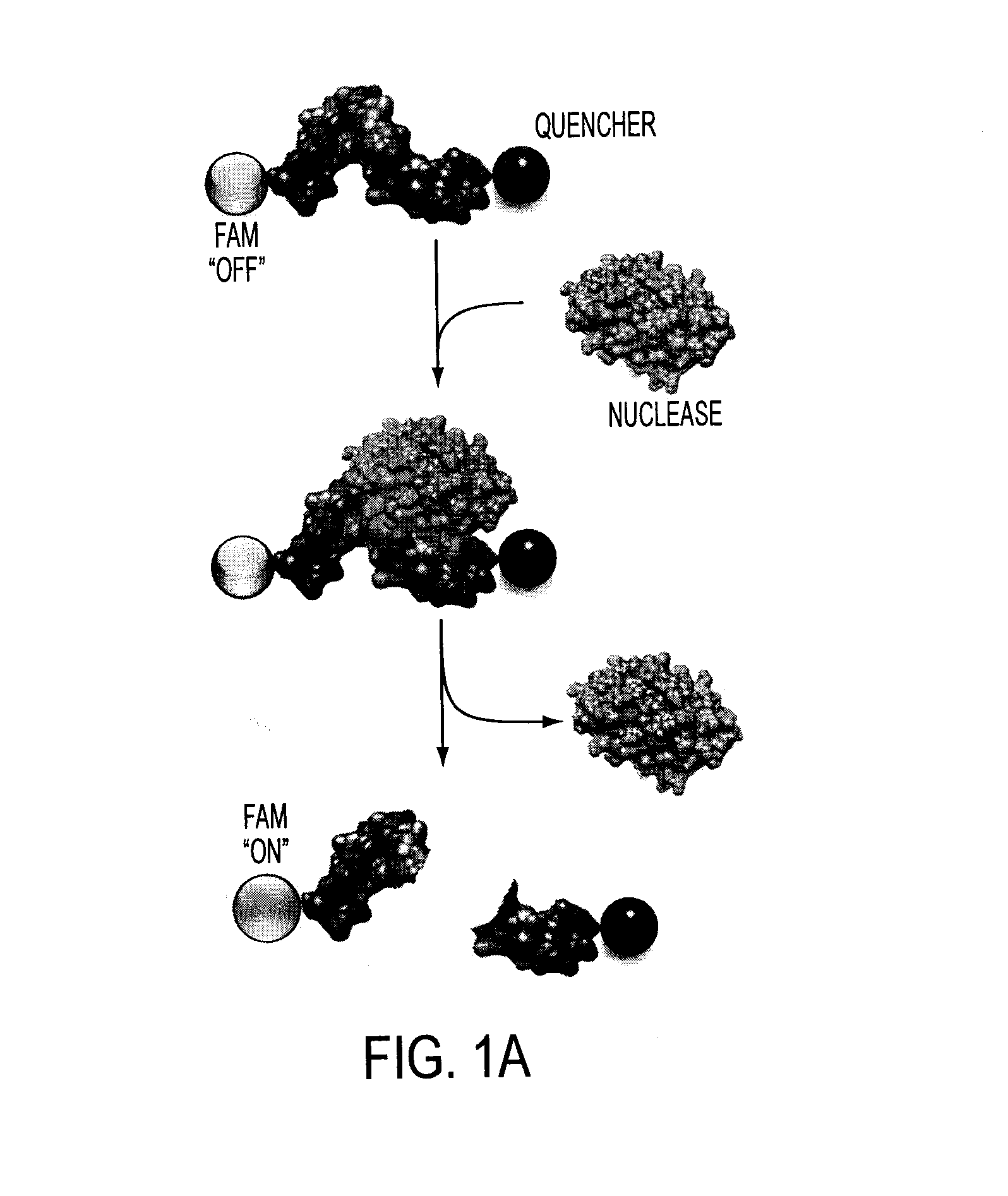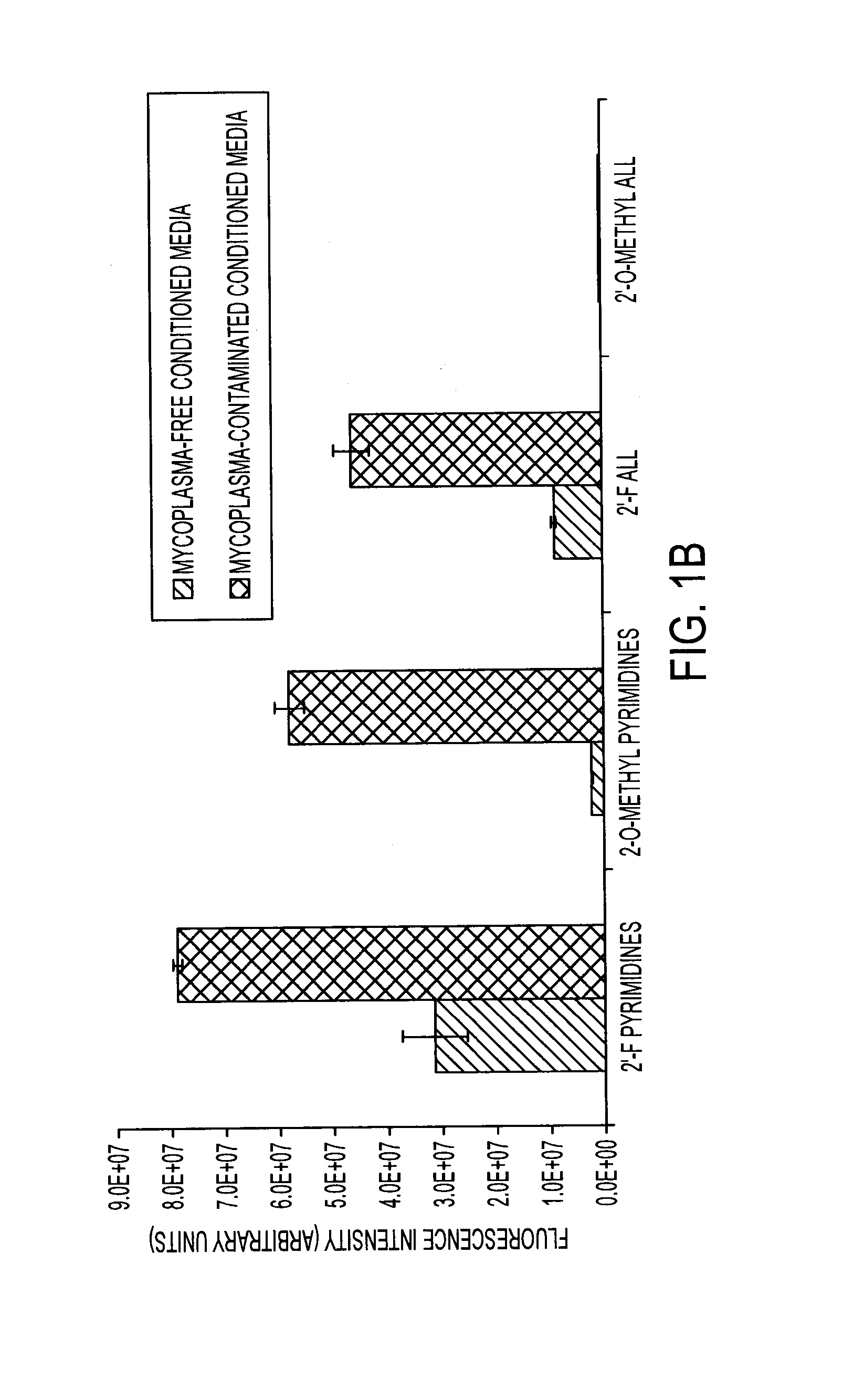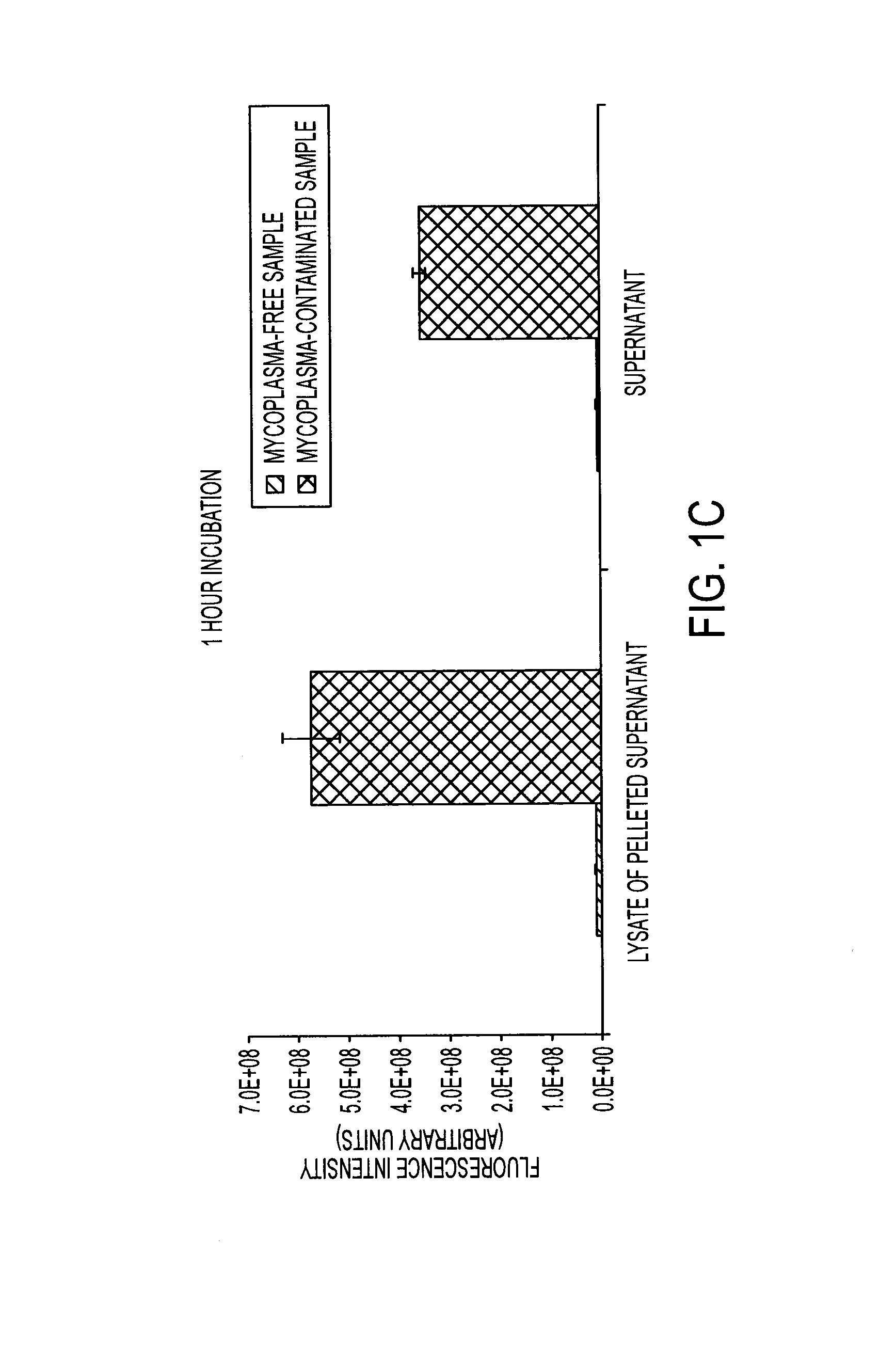Oligonucleotide-based probes for detection of bacterial nucleases
a technology of oligonucleotide-based probes and bacterial nucleases, which is applied in the direction of instruments, diagnostic recording/measuring, ultrasonic/sonic/infrasonic diagnostics, etc., can solve the problems of affecting the development of assays, affecting the detection accuracy of fluorophores, and complicated probe design
- Summary
- Abstract
- Description
- Claims
- Application Information
AI Technical Summary
Benefits of technology
Problems solved by technology
Method used
Image
Examples
example 1
[0134]Degradation of Nuclease-Stabilized RNA Oligonucleotides in Mycoplasma-Contaminated Cell Culture Media
[0135]Artificial RNA reagents such as siRNAs and aptamers often must be chemically modified for optimal effectiveness in environments that include ribonucleases. Mycoplasmas are common bacterial contaminants of mammalian cell cultures that are known to produce ribonucleases. Here, the inventors describe the rapid degradation of nuclease-stabilized RNA oligonucleotides in an HEK cell culture contaminated with Mycoplasma fermentans, a common species of mycoplasma. RNA with 2′-fluoro- or 2′-O-methyl-modified pyrimidines was readily degraded in conditioned media from this culture, but was stable in conditioned media from uncontaminated HEK cells. RNA completely modified with 2′-O-methyls was not degraded in the mycoplasma contaminated media. RNA zymogram analysis of conditioned culture media and material centrifuged from the media revealed several distinct protein bands (ranging fr...
example 2
In Vivo Detection
[0180]The cleavage of oligonucleotides can be visualized in various ways, but as discussed above, the inventors favor flanking the sequences with a fluorophore and a quencher for rapid detection of the cleavage activity with a fluorometer. Advancing one step further, the inventors envision injecting the fluorescent probe into patients and using fluorescent detection to localize sights of infection (in addition to specific pathogen data) clearly within the patient. Preliminary data of this type has been established in mouse models. Briefly, mice were injected with micrococcal nuclease (purified Staph. aureus nuclease) in leg and injected with probe in tail vein. This procedure resulted in fluorescence being seen at site of nuclease and subsequently in liver.
example 3
In Vitro Detection
[0181]Nuclease Probe Plate-Reader Assay:
[0182]The nuclease probes were synthesized by Integrated DNA Technologies (IDT; Coralville, Iowa). These probes consist of a 12 nucleotide long RNA oligo, 5′-UCUCGUACGUUC-3′, with the chemical modifications, flanked by a FAM (5′-modification) and a pair of fluorescence quenchers, “ZEN” and “Iowa Black” (3′-modifications. Three samples were assayed for degradation. PBS, 1 μl of each probe (50 picomoles) was combined with 9 μl of PBS. RNase A, 1 μl of each probe was combined with 8 μl of PBS and 1 μl RNase A (˜50 U / μl). Micrococcal Nuclease (MN), 1 μl of each probe was combined with 8 μl of PBS and 1 μl of MN (10 U / μl). All the samples were incubated at 37° C. for 4 hours. After the incubation period, 290 μl of PBS supplemented with 10 mM EDTA and 10 mM EGTA was added to each sample and 95 μl of each sample was loaded in triplicate into a 96-well plate (96F non-treated black microwell plate (NUNC)). Fluorescence levels are show...
PUM
| Property | Measurement | Unit |
|---|---|---|
| depth | aaaaa | aaaaa |
| wavelength | aaaaa | aaaaa |
| wavelength | aaaaa | aaaaa |
Abstract
Description
Claims
Application Information
 Login to View More
Login to View More - R&D
- Intellectual Property
- Life Sciences
- Materials
- Tech Scout
- Unparalleled Data Quality
- Higher Quality Content
- 60% Fewer Hallucinations
Browse by: Latest US Patents, China's latest patents, Technical Efficacy Thesaurus, Application Domain, Technology Topic, Popular Technical Reports.
© 2025 PatSnap. All rights reserved.Legal|Privacy policy|Modern Slavery Act Transparency Statement|Sitemap|About US| Contact US: help@patsnap.com



